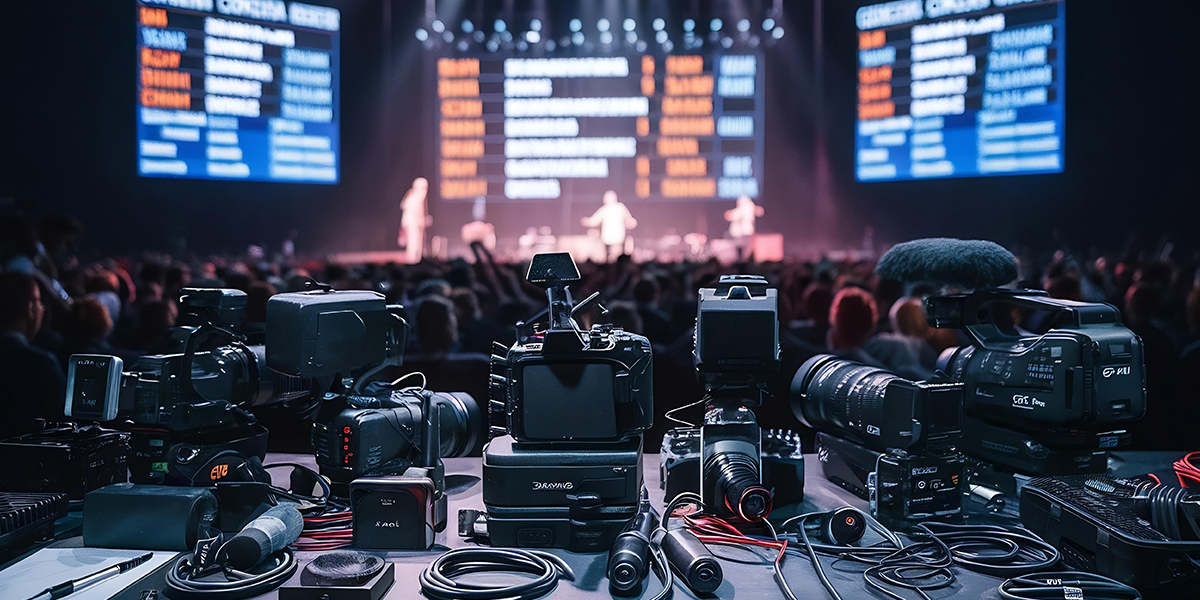Published On 07-10-2025

From boardrooms to concert halls, events are no longer confined to the people in the room. The real stage now extends to audiences tuning in from anywhere in the world. Be it a conference, or a music concert, or a brand launch, viewers expect more than a single static shot covering the overall view of the event. They're looking for an experience that feels lively, varied, and immersive. Multi-camera webcasting makes that possible.
In essence, it involves using two or more live streaming cameras to capture an event from different perspectives, then switching between those angles in real time. Unlike traditional webcam streaming, it delves deeper into the visuals like speakers’ close-ups, sweeping crowd shots, and candid audience reactions, so your broadcast resembles a polished TV production. For brands investing in live streaming services for events, it is not a mere technical upgrade, but a way to showcase professionalism and build credibility.
In the sections ahead, we’ll break down the benefits, the possible challenges, and the best practices for delivering a multi camera live stream that’s smooth, engaging, and worth every viewer’s attention.
Multiple angles make viewers feel like they’re part of the action, whether it’s a keynote, a concert, or a product reveal.
Combined with a polished live streaming setup, the results look broadcast-ready, smooth transitions and engaging visuals keep audiences watching.
One camera can miss key moments. A multi-camera live stream ensures nothing slips through, from stage highlights to audience applause.
Switching angles strategically helps guide attention and build narrative flow, rather than leaving viewers in a static scene.
A high-quality webcam streaming presentation signals professionalism and can strengthen sponsor confidence.
While the investment is higher, increased engagement often leads to better leads, sponsor value, and repeat audiences.
Coordinating multiple feeds requires switchers, capture cards, and expertise, either in-house or via a trusted live streaming platform provider.
Equipment and skilled crew add to the budget, but bundled event live streaming services can make it more accessible.
More cameras mean more data, requiring solid internet bandwidth and backup systems, especially for YouTube live streaming.
Smooth switching and quick problem-solving are crucial for avoiding jarring cuts or downtime.
Map out shots in advance, such as speaker close-ups, crowd pans, and product cut- ins, to keep the story moving smoothly.
Make sure you go through every part of the setup well before the event. Check the live streaming camera focus, confirm the audio is in sync with the video, and ensure all connections are working properly. Testing early gives you time to fix issues and helps the live stream run smoothly on the big day.
Live streaming platforms should be chosen after checking their latency rate and performance stability. For instance, YouTube live streaming works for public reach; private events may need dedicated solutions.
You should have backups for uncertainties. Have spare cameras, cables, and even a backup live streaming platform ready to go.
Seamless flow of information within the crew ensures smooth transitions and consistent quality.
Pick the platform based on audience habits, public social platforms for reach, or secure webcam streaming for controlled access.
Multi-camera webcasting helps in enhancing audiences' experience of live content. When you combine a well-planned live streaming setup with smart preparation and the support of skilled event live streaming services, your broadcast pulls people in, keeps them engaged, and leaves them feeling like they were part of something special.
At 24 Frames Digital, we help brands design and deliver multi camera streaming solutions that work across platforms like YouTube live streaming or custom live streaming services for events. The result? A stream that’s as impressive online as it is in person.
Copyright © 24 Frames Digital